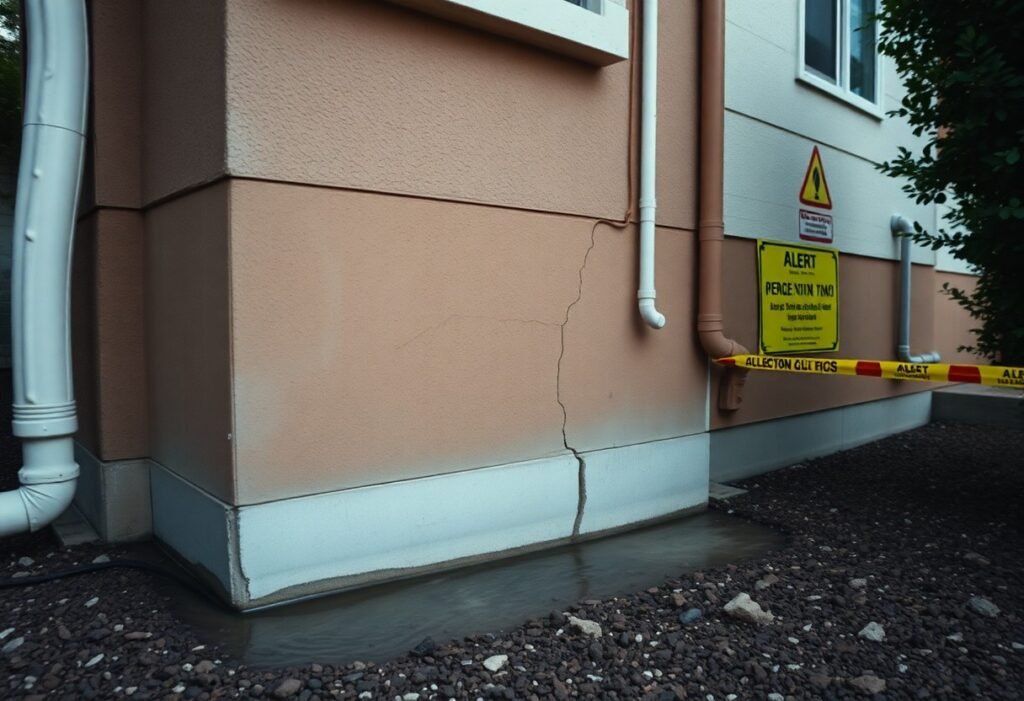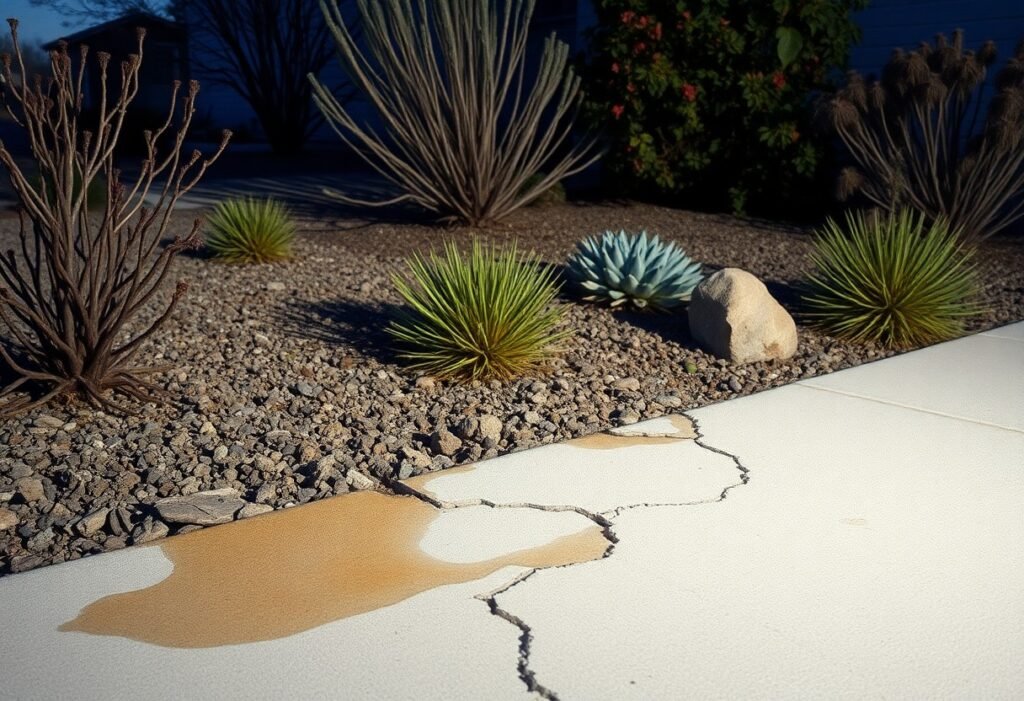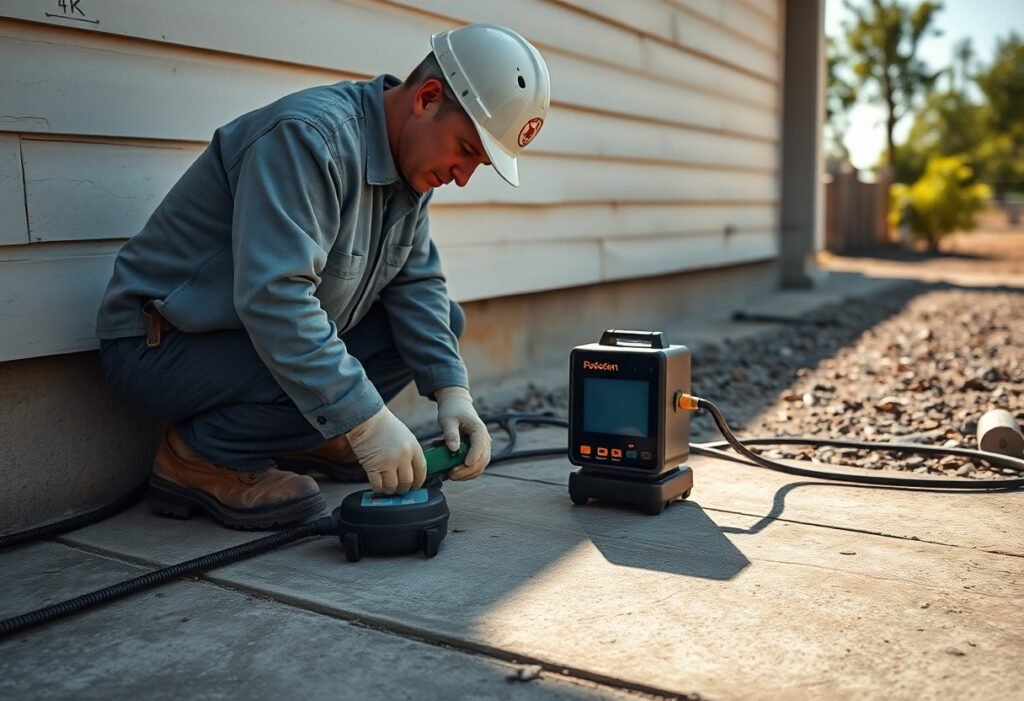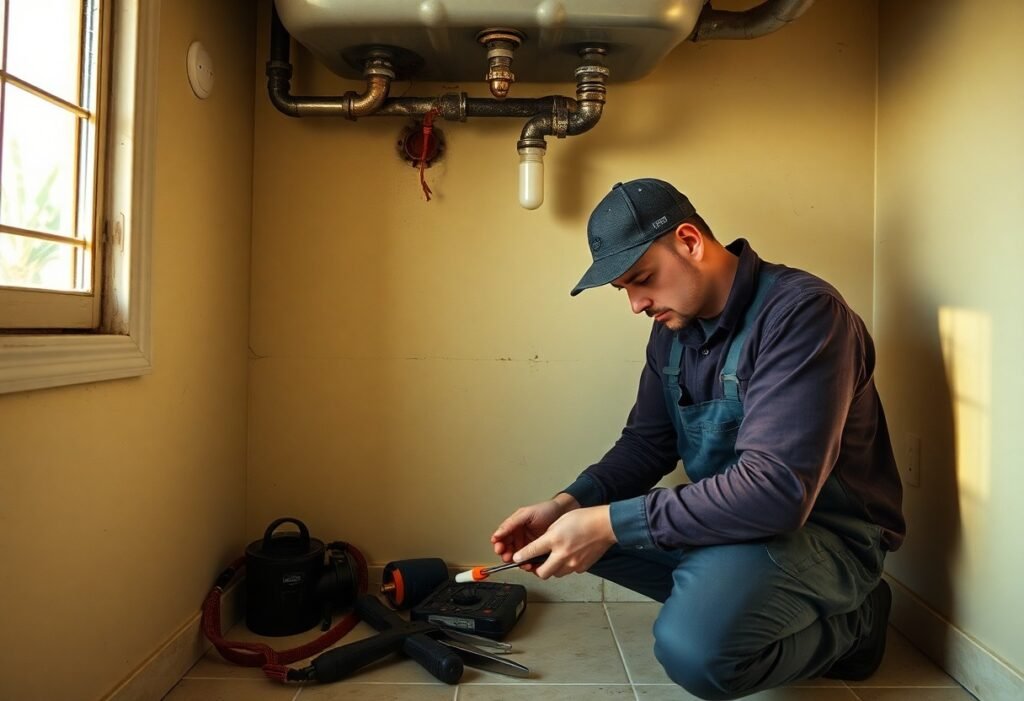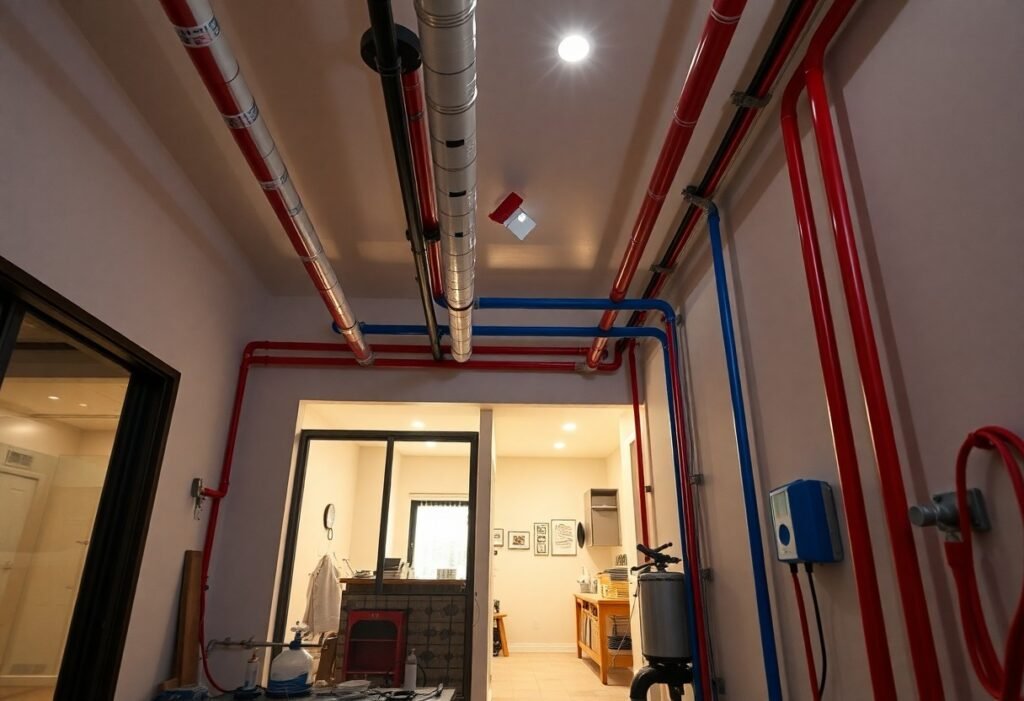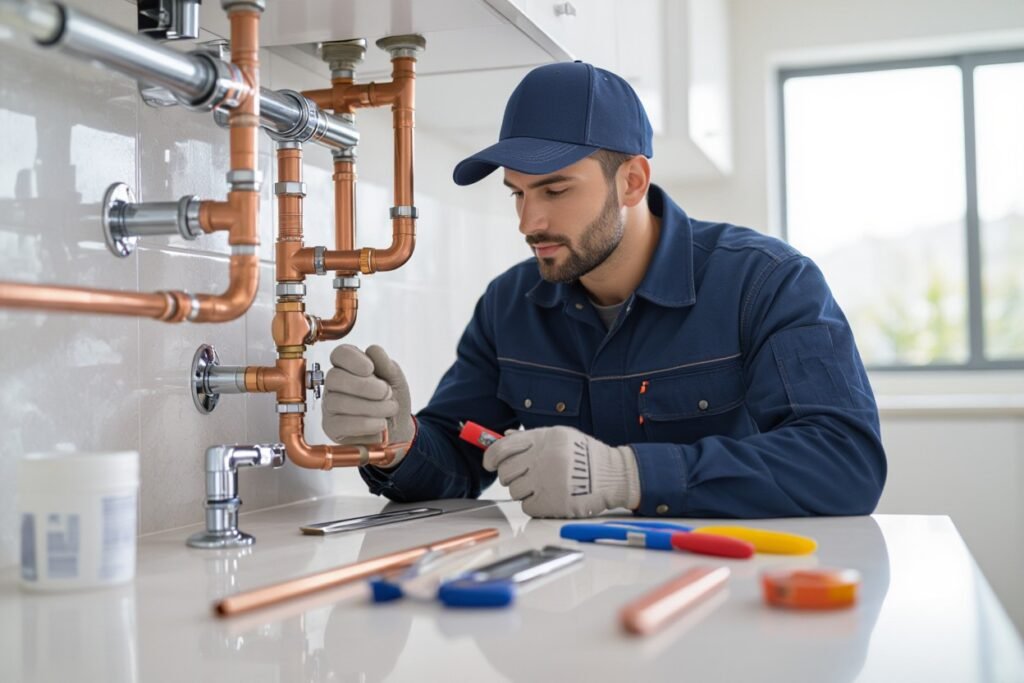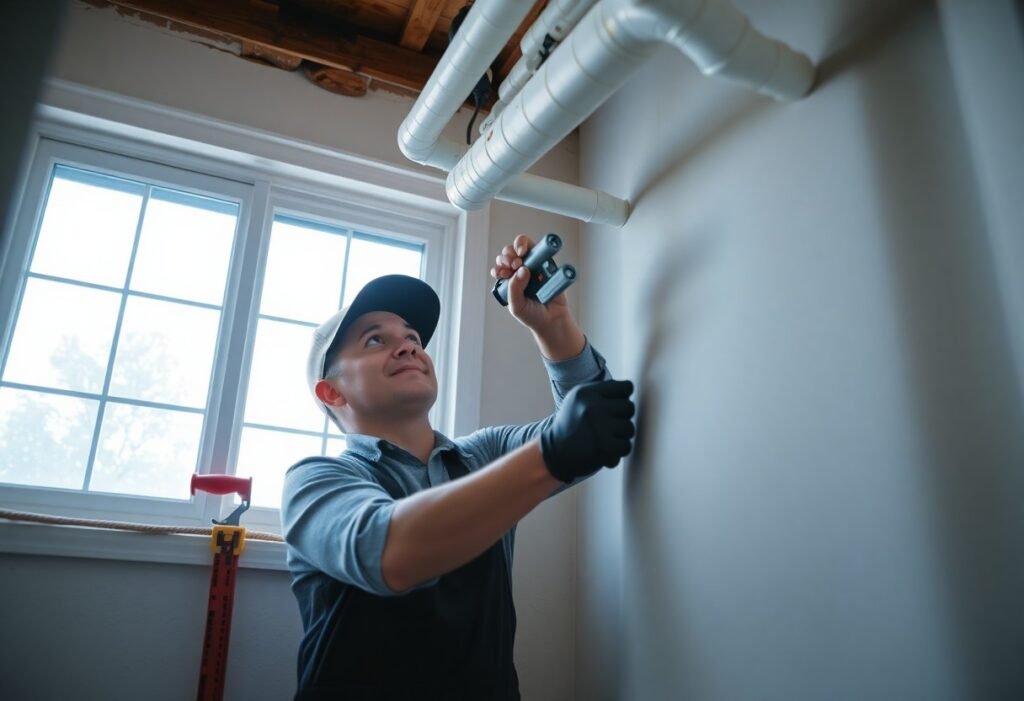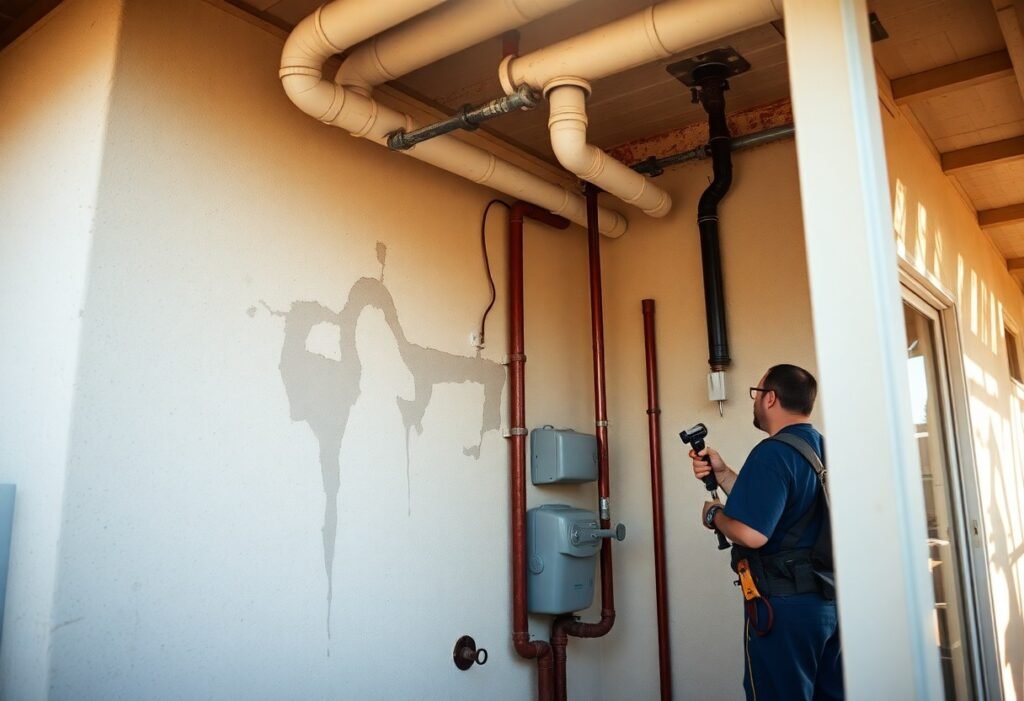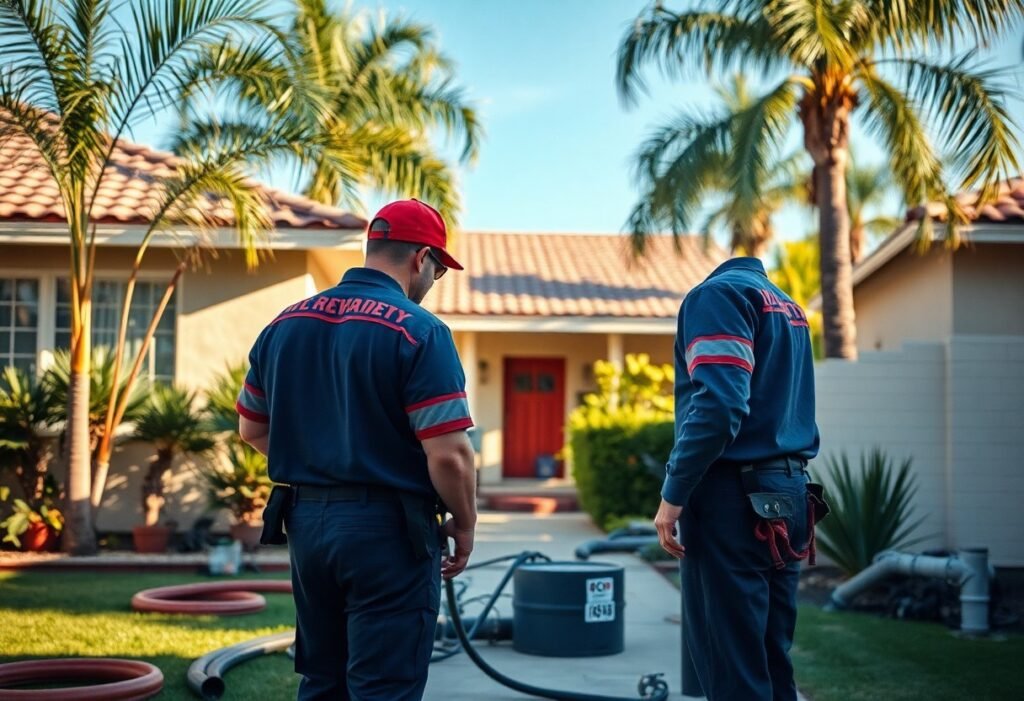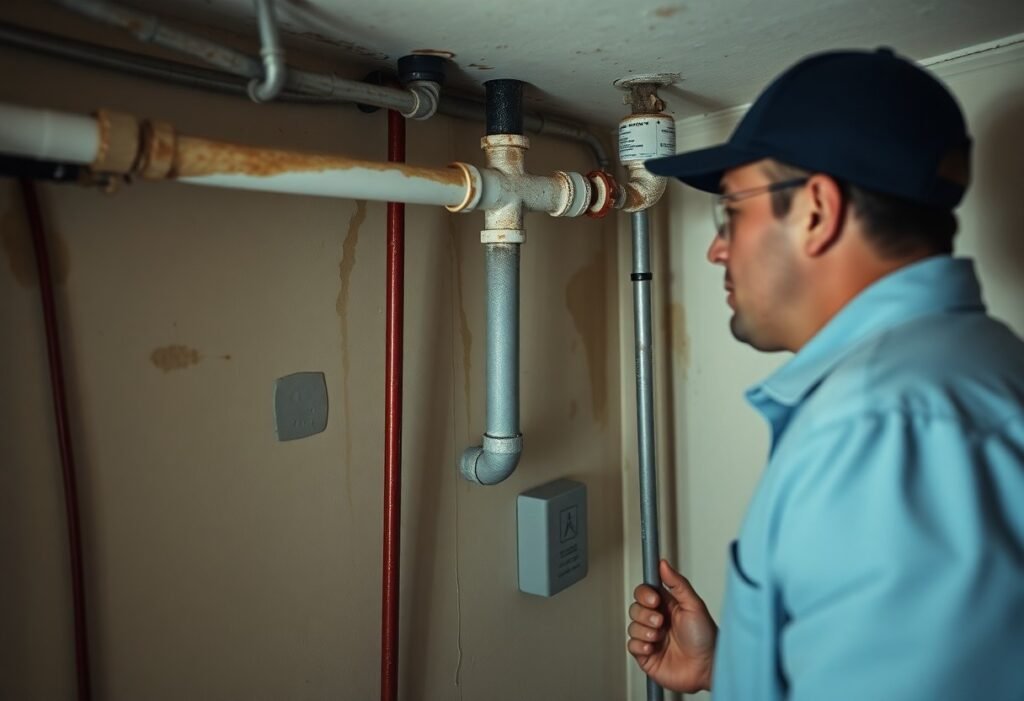The Hidden Dangers of Slab Leaks in Fullerton, CA – A Plumber’s Guide
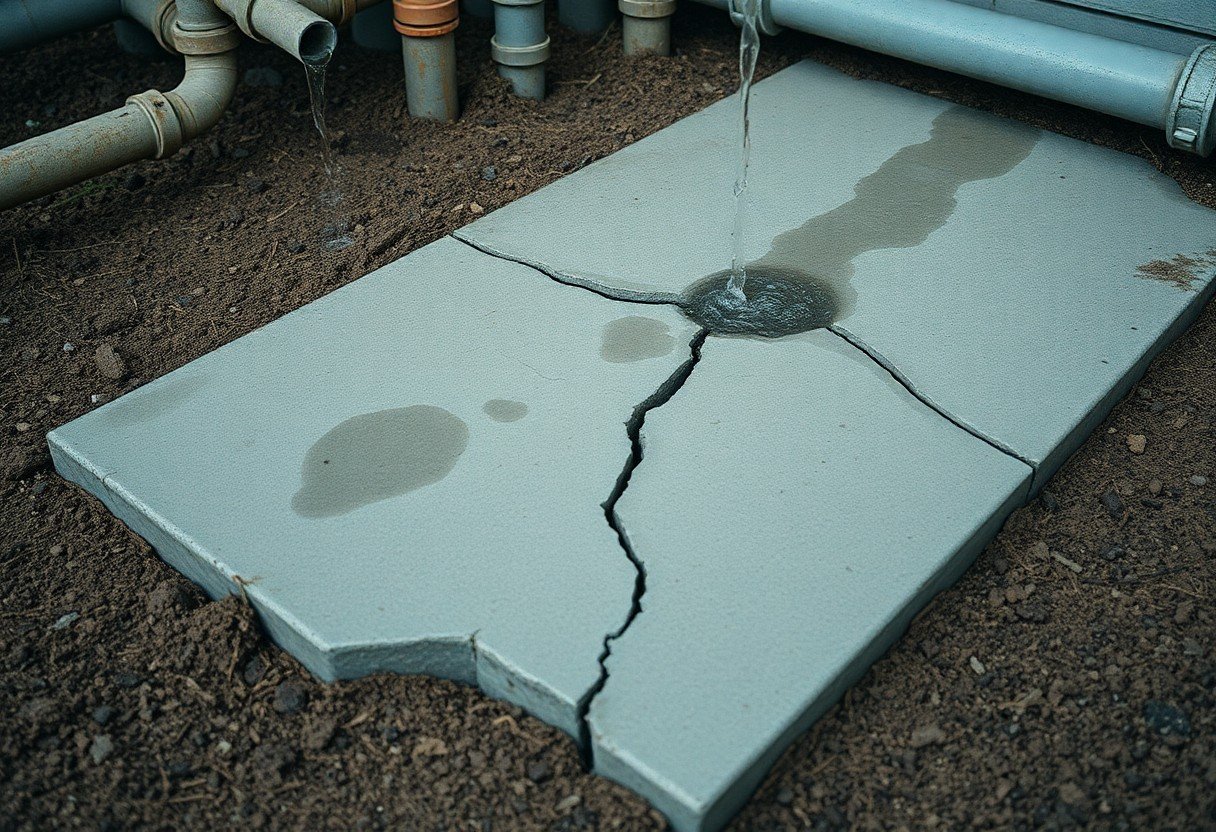
Understanding slab leaks is vital for homeowners like you in Fullerton, CA. These leaks can cause significant damage to your property, leading to mold growth, structural issues, and increased water bills. Ignoring this issue may put your investment at risk. In this guide, you will learn how to identify the signs of slab leaks and why prompt action is necessary to protect your home and family. Equip yourself with the knowledge to mitigate these hidden dangers and ensure your plumbing system remains intact.
Key Takeaways:
- Slab leaks can lead to significant property damage if left unaddressed, including structural issues and mold growth.
- Early detection is key; signs like damp spots on floors, increased water bills, and the sound of running water can indicate a leak.
- Professional plumbers use specialized tools and techniques to accurately locate and repair slab leaks, reducing repair time and cost.
The Silent Symptoms of a Slab Leak
Slab leaks often go unnoticed until significant damage occurs, making it necessary to be vigilant about the symptoms. Unexplained water accumulation, a sudden rise in your water bill, or the presence of mold can all be indicators of an underlying slab leak. Recognizing these signs allows for timely intervention and prevents costly repairs down the line.
Uncovering Unusual Increases in Water Bills
An unexpected spike in your water bill is often one of the first indicators of a slab leak. If you typically use a consistent amount of water and notice a sudden increase, this may point to water escaping through the foundation, leading to waste and increased costs. Compare your current bill with previous months to assess any drastic changes.
Identifying Subtle Signs of Water Damage
Water damage can manifest in various subtle ways, yet you may overlook them unless you know what to look for. Check for unexplained damp spots on your flooring or walls, unusual warm patches on floors, or the presence of mold and mildew. Even a musty odor in your home could indicate moisture lurking beneath the surface. These signs suggest that a slab leak may be causing hidden damage to your home, necessitating immediate attention to prevent further deterioration.
The Dangers Lurking Beneath: Consequences of Ignoring Slab Leaks
Ignoring slab leaks can lead to severe, costly consequences that may put your home and health at risk. Delaying repairs not only exacerbates the damage but can also create a host of complex issues that homeowners often don’t anticipate until it’s too late. From compromised structural integrity to health hazards due to mold growth, the implications stretch far beyond a single leak.
Structural Integrity: How Slab Leaks Weaken Your Home
A slab leak can significantly compromise your home’s structural integrity. Water seeping into the foundation can lead to erosion of soil beneath your home’s slab, destabilizing the foundation and resulting in cracks, uneven floors, and even separation from walls. In extreme cases, it can necessitate expensive foundation repairs or complete replacement of your home’s slab.
Health Hazards: Mold and Mildew Growth
Flooded areas due to slab leaks create perfect conditions for mold and mildew to thrive. Once moisture infiltrates wood and drywall, it sets the stage for these harmful pathogens to rapidly develop. Exposure to mold spores can lead to serious health issues, including respiratory problems, allergies, and skin irritations. Ensuring your home stays dry is key to maintaining a healthy living environment.
Mold growth isn’t just an aesthetic issue; it can become a serious health risk if left unaddressed. According to the CDC, even short-term exposure to mold can trigger asthma attacks and exacerbate existing allergies. You might notice a musty odor or dark spots on walls and ceilings, both early warning signs of mold development. Timely intervention is vital to prevent these health hazards, as mold can spread quickly and remediation efforts become increasingly expensive and complicated the longer you wait. If you suspect a slab leak, addressing the issue promptly can prevent both structural damage and health risks associated with mold exposure.
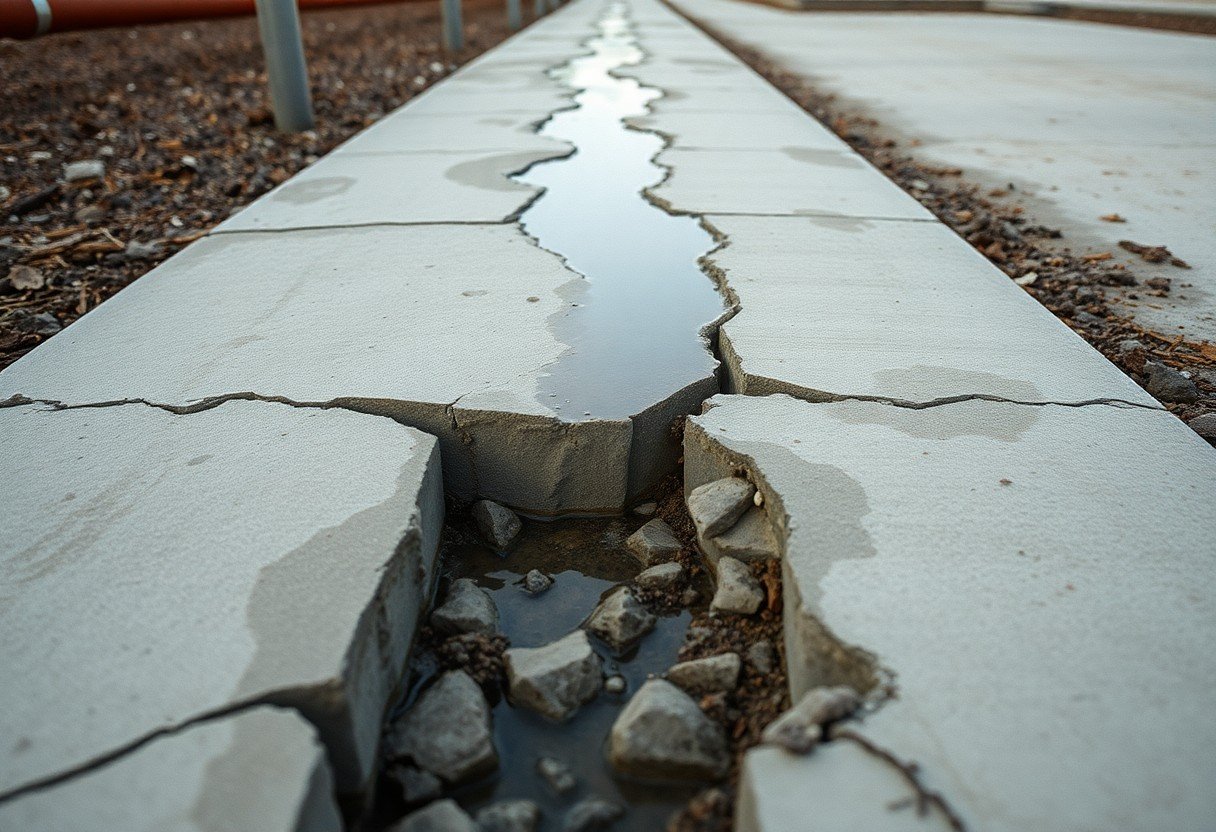
The Everyday Environmental Factors Exacerbating Slab Leaks
Factors in your environment can significantly impact the likelihood of slab leaks. Daily temperature fluctuations, moisture levels, and nearby vegetation can all contribute to leak development. Specifically, soil expansion and contraction due to moisture can exert pressure on pipelines, leading to cracks over time. Additionally, root systems from trees may infiltrate underground pipes, causing serious damage. Understanding local influences is key for prevention and maintenance. Assume that even seemingly minor environmental changes can have substantial effects on your plumbing systems. For expert assistance, check out Slab Leak Repair & Detection in Orange County, CA.
Soil Composition and Its Role in Leak Formation
Your home’s stability relies heavily on the surrounding soil. In areas with expansive clay soil, shifting and swelling during wet seasons can significantly stress your plumbing. This type of soil is common in Fullerton, where the constant movement can create fissures in pipes, facilitating leaks. Regular soil assessments can help reduce risks and inform you of necessary precautions.
Climate Conditions: The Impact of Fullerton’s Weather
Fullerton’s climate plays a transformative role in slab leak formation. The warm, dry summers lead to soil shrinkage, while rainstorms cause rapid soil expansion. Such cycles put pressure on your plumbing, heightening the risk of leaks and damage. The Mediterranean climate characteristic of this region means it’s necessary for homeowners to remain vigilant and proactively address any signs of plumbing issues.
Moreover, the fluctuating temperatures can lead to severe strain on your pipelines as they expand and contract, making them susceptible to breaks. Fullerton averages about 14 inches of rain annually; if you experience significant rainfall, immediate investigation into your plumbing’s integrity is wise. Special attention should be given during the rainy season, as consistently wet conditions can exacerbate existing vulnerabilities, leading to potential slab leaks if left unchecked. Addressing these climatic impacts with suitable plumbing solutions is vital to maintaining a safe and dry home environment.
The Effective Strategies for Prevention and Maintenance
Maintaining your plumbing system can significantly reduce the risk of slab leaks. Implementing effective strategies for prevention includes regular inspections, timely upgrades to older plumbing systems, and staying informed about the unique issues within your Fullerton property. By prioritizing these actions, you can prolong the life of your plumbing and protect your home from costly water damage.
Routine Inspections: What Homeowners Should Look For
During routine inspections, homeowners should monitor for warning signs such as water stains on walls or ceilings, an unusual increase in the water bill, and damp or moldy patches around your home. Checking your water meter for rapid movement while all fixtures are off can also reveal leak issues. By addressing these indicators early, you can prevent more severe problems down the line.
Upgrading Plumbing Systems: When and Why to Invest
Investing in an upgraded plumbing system can yield significant benefits, especially if you live in an older home. Materials such as copper or PVC offer greater durability and resistance to leaks compared to outdated galvanized pipes, while modern fixtures often come with better warranties and efficiency ratings. Enhancing your plumbing not only minimizes the risk of slab leaks but can also improve overall water quality and pressure.
Older plumbing systems, especially those composed of materials like polybutylene, are particularly susceptible to leaks and deterioration, making upgrades a smart choice for homeowners. Newer systems can reduce the risk of future slab leaks by integrating advanced technology that detects issues before they escalate. Moreover, consider that older pipes can lead to compromised water quality; by modernizing your plumbing, you ensure that your household has clean and safe water. Upgrading may involve upfront costs, but the long-term savings on repair bills and improved home value are well worth the investment.
Emergency Response: What To Do If You Suspect a Slab Leak
Suspecting a slab leak can be alarming, but quick action can mitigate potential damage. Identify the signs of leakage, such as strange sounds from your plumbing, hot spots on the floor, or unusual water bills. Once you notice these symptoms, immediate action is vital. Turn off the main water supply to prevent further leakage and damage, and document the situation with photos or notes for your plumber. This thorough approach can expedite the repair process and help your plumbing professional understand the severity of the situation.
Initial Steps to Take Before Professional Help Arrives
Before a plumber arrives, take a few steps to minimize potential damage. Gather basic information about your plumbing system, including its age and layout. If possible, move furniture and items away from the affected area to prevent water damage. You can also check for visible signs of leaks in walls or ceilings and, if safe, access your crawl space or basement to identify any pooling water. Your quick actions can make a significant difference in the repair process.
Choosing the Right Plumber: Questions to Ask
Finding the right plumber is important to effectively address a slab leak. Ask potential candidates about their experience with slab leak detection and repair, as well as their licensing and insurance status. Inquire about their methods for locating leaks efficiently, and whether they use advanced technology like infrared cameras or electronic leak detection. It’s also wise to ask for references or reviews from previous clients, giving you confidence in their abilities.
Asking specific questions can help you gauge a plumber’s expertise and approach to slab leaks. For instance, inquire whether they offer a detailed estimate before starting work, and what guarantees or warranties they provide on their repairs. Understanding their process for handling plumbing emergencies is also key. A reputable plumber will detail their communication methods throughout the repair process, ensuring that you are informed and involved every step of the way. This collaborative approach minimizes stress and fosters trust, providing peace of mind in a challenging situation.
To wrap up
With this in mind, it’s imperative for you to be aware of the hidden dangers that slab leaks can pose in Fullerton, CA. Promptly identifying and addressing these leaks can prevent significant damage to your property and costly repairs down the line. By understanding the signs of slab leaks and knowing when to call a professional plumber, you can safeguard your home and maintain its integrity. Stay proactive and informed to protect your living space from the potential hazards associated with slab leaks.
FAQ
Q: What are slab leaks and how do they occur in Fullerton, CA?
A: Slab leaks refer to plumbing leaks that occur under the concrete foundation (or slab) of a building. They can happen due to various reasons, including corrosion of pipes, ground movement, or poor installation. In Fullerton, the soil composition and environmental factors can contribute to the wear and tear of piping systems, making slab leaks a concern for homeowners. Proper maintenance and regular inspections can help identify potential issues before they escalate, avoiding costly repairs and damage.
Q: What are the signs that indicate a slab leak in my home?
A: Homeowners should be vigilant for several warning signs of slab leaks, including unexplained increases in water bills, wet or damp spots on floors that seem out of place, the sound of running water when no taps are in use, or the presence of mold and mildew. Additionally, if you notice warm spots on the floor or a significant drop in water pressure, these could be indicators of a potential slab leak. Early detection is key to minimizing damage and repair costs.
Q: How can slab leaks be repaired, and what should I expect in terms of cost and time?
A: Repairing slab leaks typically involves several methods, such as epoxy pipe lining, rerouting the plumbing, or breaking through the concrete to replace the damaged pipe. The chosen method will depend on the severity and location of the leak. Costs can vary widely, but homeowners can expect to pay anywhere from a few hundred to several thousand dollars, depending on the complexity of the repair. The timeline for repairs may range from a few hours to a couple of days, contingent on the method used and the extent of the damage. Consulting with a professional plumber can provide a more accurate estimate tailored to the specific situation.

